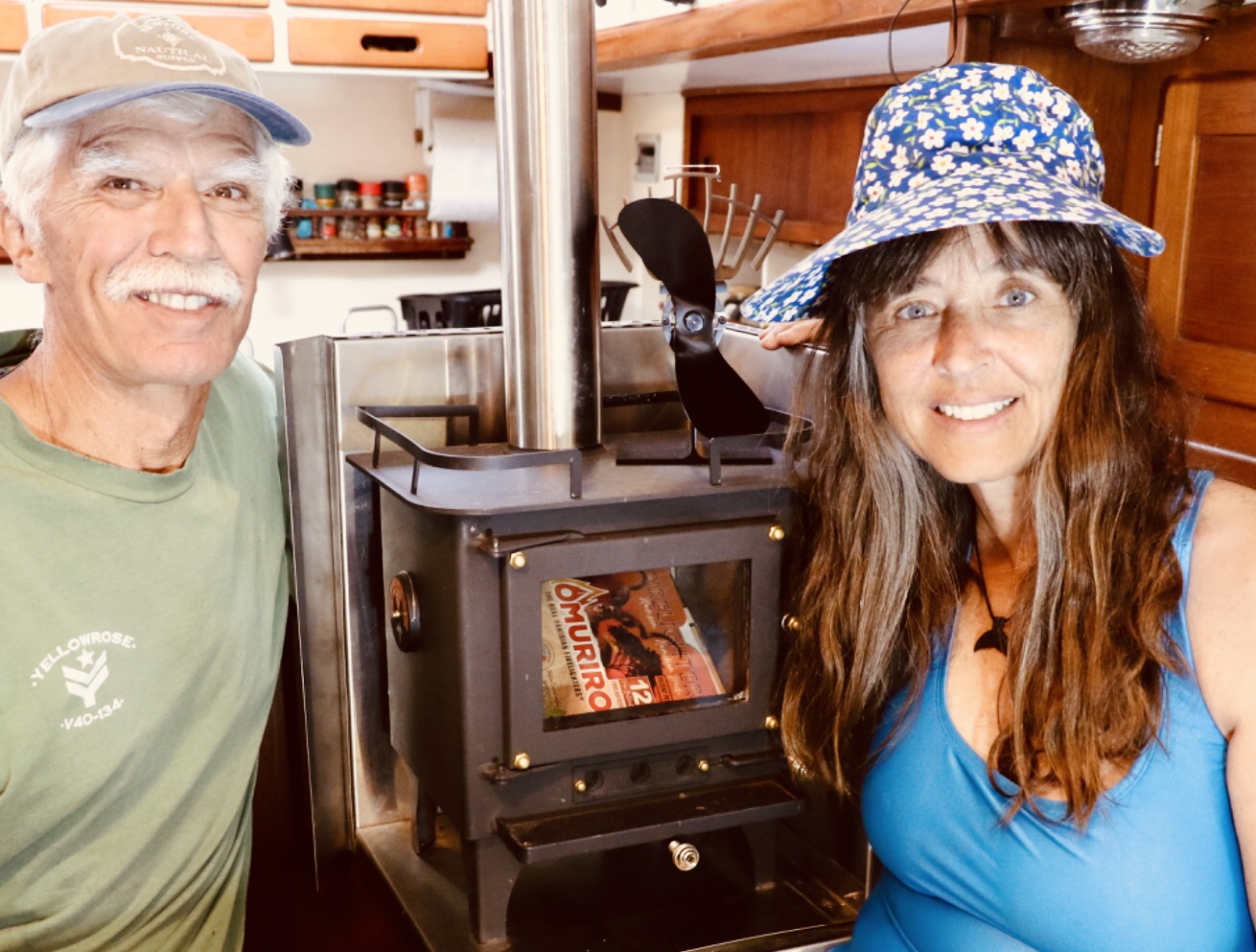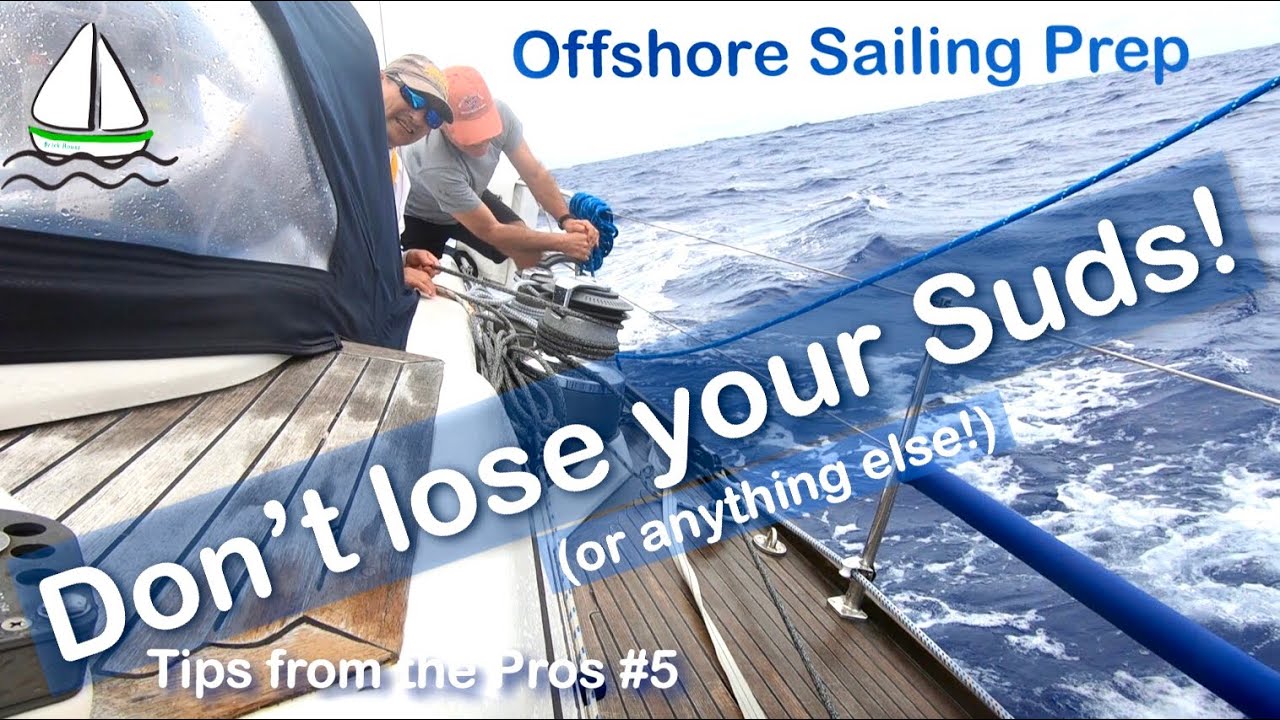Coppercoat and Propspeed Update
Options for Heating a Boat -Why we Chose a Cubic Mini Wood Stove
We will be cruising in some cold weather destinations next year, and we need to stay warm on Brick House!

So we started researching options for how to heat a boat last year. Here are the options we looked at, and why we ruled out each one systematically, for heating the boat for cruising in cold weather, full time.
Here is the video…information below is supplementary to the video…
1. Espar diesel – electric heater Details Here
A. Brick House used to have a forced hot air system…Webasto, Wallis, Espar, or a Chinese diesel heater…all the same principal with different qualities and options.My memory of this system is one of strong diesel fumes, and dry air you didn’t want to be near.
B. Though friends rave about this easy push button system… but when I ask them to demonstrate the system…”well…it’s broken right now…I need to send it in for repair”. This wasn’t just once…but every system I asked to see on each cruising boat that had one. These systems are NOT something you can repair on your boat…they usually require sending them in for servicing. This Is NOT something we can do where we will be sailing!
C. Installation requires Routing diesel around the boat, electric pumps, exhaust systems out the side of the boat, big air duct pipes…and other things we were not fond of doing to have heat for 6 months or a year.
D. The last reason we chose not to use this system was the consumption of not just diesel, but also of electricity. Brick House has a great battery system, but not a huge capacity. We did not want to be reliant on electricity to run our heat. The electrical consumption of a forced hot air heating system is not insignificant.
2.Propane Heater…like a Dickinson Marine Propane Heater. More Details
A. We immediately dismissed a propane heater for the boat. We very well know the pain of moist heat. Moisture is a byproduct of burning propane. Condensation will be everywhere, even worse than with a quartz heater. Dampness on a boat is not a good recipe for staying warm aboard. We needed a dry heat.
B. Consumption. To heat a boat for 6 months, would require a minimum of 12 big bottles of propane on deck. This is not practical. And if you add the electricity assist for better heat dispersion…more electricity consumed too.
C
We did consider the P12000 propane heater that Dickinson Marine makes, because that particular design has a sealed combustion in it, and hence would not be a wet heat. To get the capacity I felt we needed for heating the boat, we would have had to do the bigger model, the P12000, which comfortably heats a 12 x 12 foot area…which is really only about half the area we would like to have heated. The main problem I have with this unit, is the propane we would need to carry onboard to run it, even if just at night. It’s says you get about 80-100 hours out of one 20 pound bottle. If we ran it just 1/3 of the day…and that’s darn conservative, we would get about 10-12 days out of each bottle. Half that if we ran it much of the day, and just let it go off at night. ..would lead to using one bottle per week. Plus it needs electricity for the fan…
If we cruised in remote areas for 6 months, assuming we found one place to fill our propane bottles exactly halfway through , we would have to carry 12 20 pound bottles of propane. We just couldn’t see carrying that much weight and bulk onboard Brick House.
3. Pellet Stove. Tempting…but…One on Amazon
A. Monthly maintenance required involving a vacuum cleaner. We don’t have this capability to vacuum a stove monthly.
B. Most importantly, a pellet stove requires electricity. We just don’t want to depend on electricity to stay warm.
C. Storage of wood pellets. We would need many big bags of pellets. It’s very possible to buy them in major population areas, and they are cheap, but we will only be in a very major population center once or twice in 6 months…so we would need to stock up on many bags, and keep the bags dry.
4. A Drip Diesel/Alcohol stove heater, like a Refleks heater. At least this doesn’t need electricity so it was a strong consideration. But…
A. Diesel Routing…diesel dependance again. We don’t want to store or route diesel all over the boat. We don’t want a diesel tank inside. We will have all we can do to carry enough diesel to motor around the fjords of Chile..we don’t want to also have to be carrying 100 gallons of fuel for a stove to stay warm, never mind alcohol for the lighting of the Refleks.
B Difficulty of Use. I’m sure we could get the hang of it, but people do report difficulty getting this kind of unit to start, and heat properly.
5.Hydronic heater. Basically baseboard heaters filled with hot water…similar to the waste when your engine runs, but a unit to make the water heat in tubes that run to critical spaces on your boat. We liked this compact unit, but…
A. We did not have space to run hot water pipes all over the boat.
B. Very expensive system. We aren’t even sure we will be in this area for 6 months yet. We may just go through as fast as we can depending on how we are feeling. We didn’t want to spend thousands for this adventure.
6. A small woodstove. Some economical models, some very expensive unit too though, and not dependent on Electricity at all. Endless supply of easy and even free fuel. But… (Video comes out today: The Video)
A. Most are too big for our space. Luckily, Cubic Mini had 2 versions that would fit easily though. Information, Installation instructions, and Videos
B. Gathering of wood, and keeping it dry will prove to be challenging. But other fuels may be found in one or two areas hundreds upon hundreds of miles apart, often to windward, and must be carried in bulk. Wood on the other hand can be found everywhere, in small doses. It will give us something to do together on the beaches and wooded anchorages we anchor at along the way, as well as a bit of exercise and purpose to our walks.
C. We will still have to do some maintenance…cleaning the flue periodically. But at least we are capable of doing this and it requires no power to do so…just a strong arm and a brush.
D.Tending of the Fire presents hot ashes and embers. We will need to be careful to not let anything come out of stove while opening the door. We purposely got an oversized platform to put it on, with a drawer that extends outwards for this very reason. We will still need to be very careful while using the stove.
7.Electric Heater
We do not have enough power to run a quart heater full time on Brick House. But until we leave the dock in Uruguay we will have and use one!
Related Images:
An Offshore Passage..Secure it, Lash it Down, Close it tight, or lose it Overboard!!
The only thing that fell over on our last offshore passage were the cushions…we forgot to replace the velcro when we redid the bulkheads. But losing something overboard, whether it be your valuable water supply, a crew member, or the anchor at sea…all can be a very serious problem while sailing offshore on a passage!
Patrick Childress’ latest “Tips from the Pros” Sailing Video series, with Hank Schmitt, demonstrates some simple things you can do, before leaving on an offshore passage, to prevent bigger problems while you are sailing offshore.
Check out the video here, and please leave all comments on the video in YouTube…not here. It really helps Youtube to promote the video more if they see that you are enjoying the video and commenting about it, sharing it, giving it a thumbs up etc.
Professional Delivery Captains -Sailing Tips from the Pros Sailing Series



